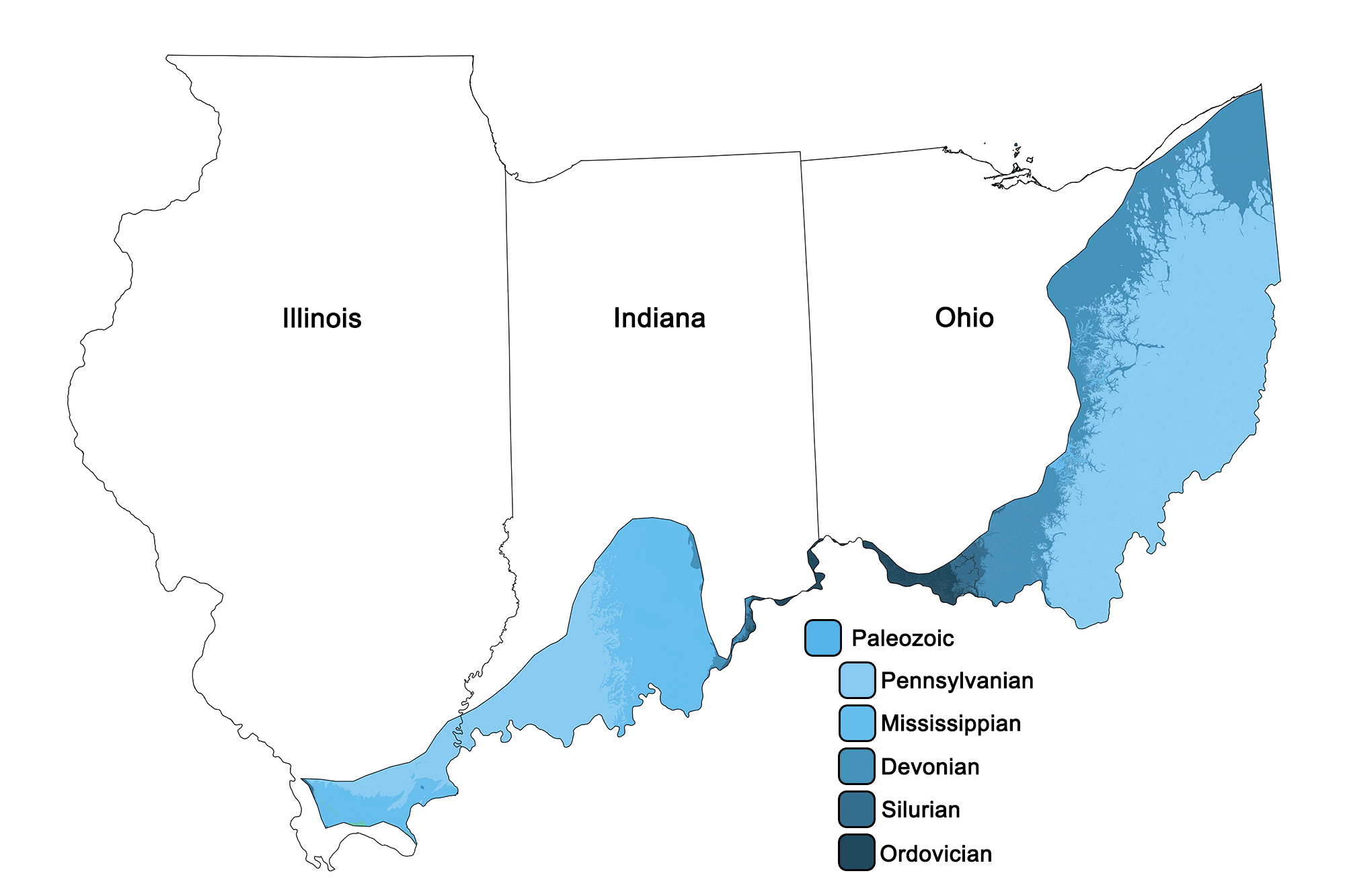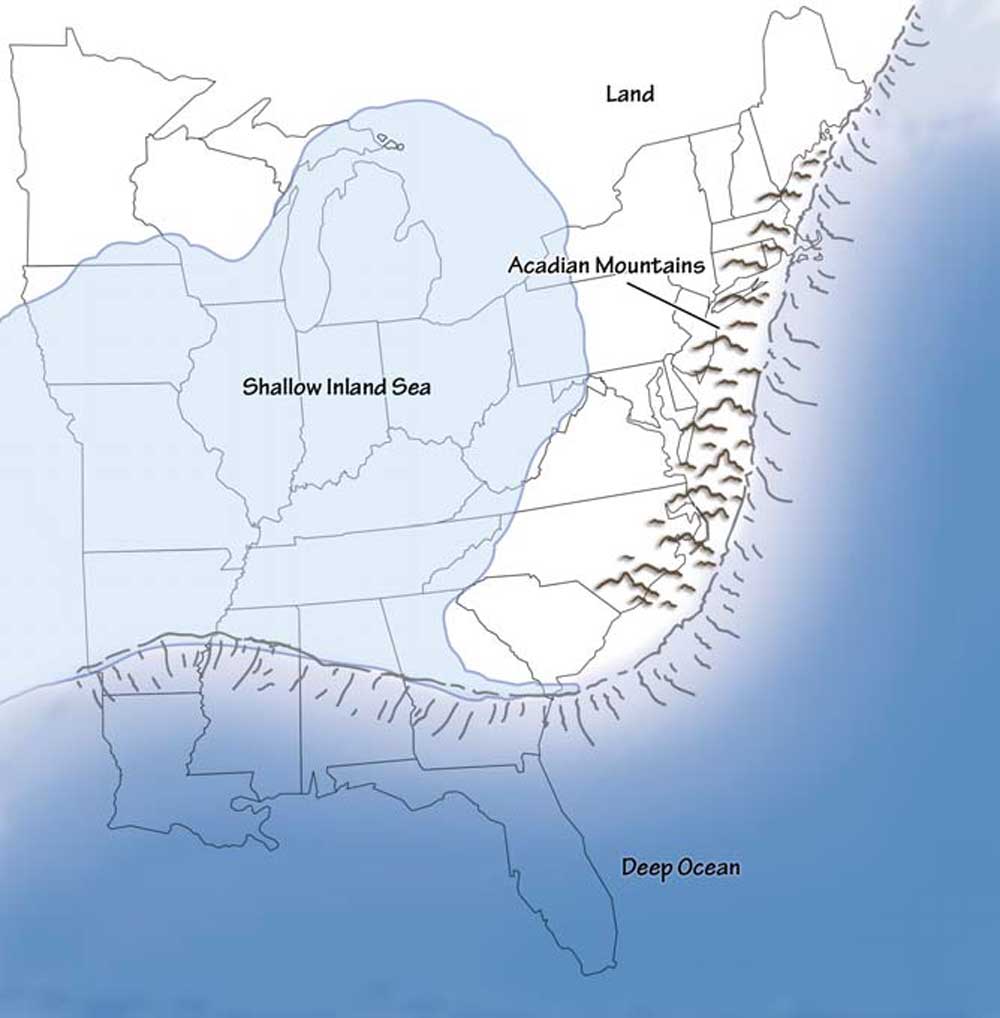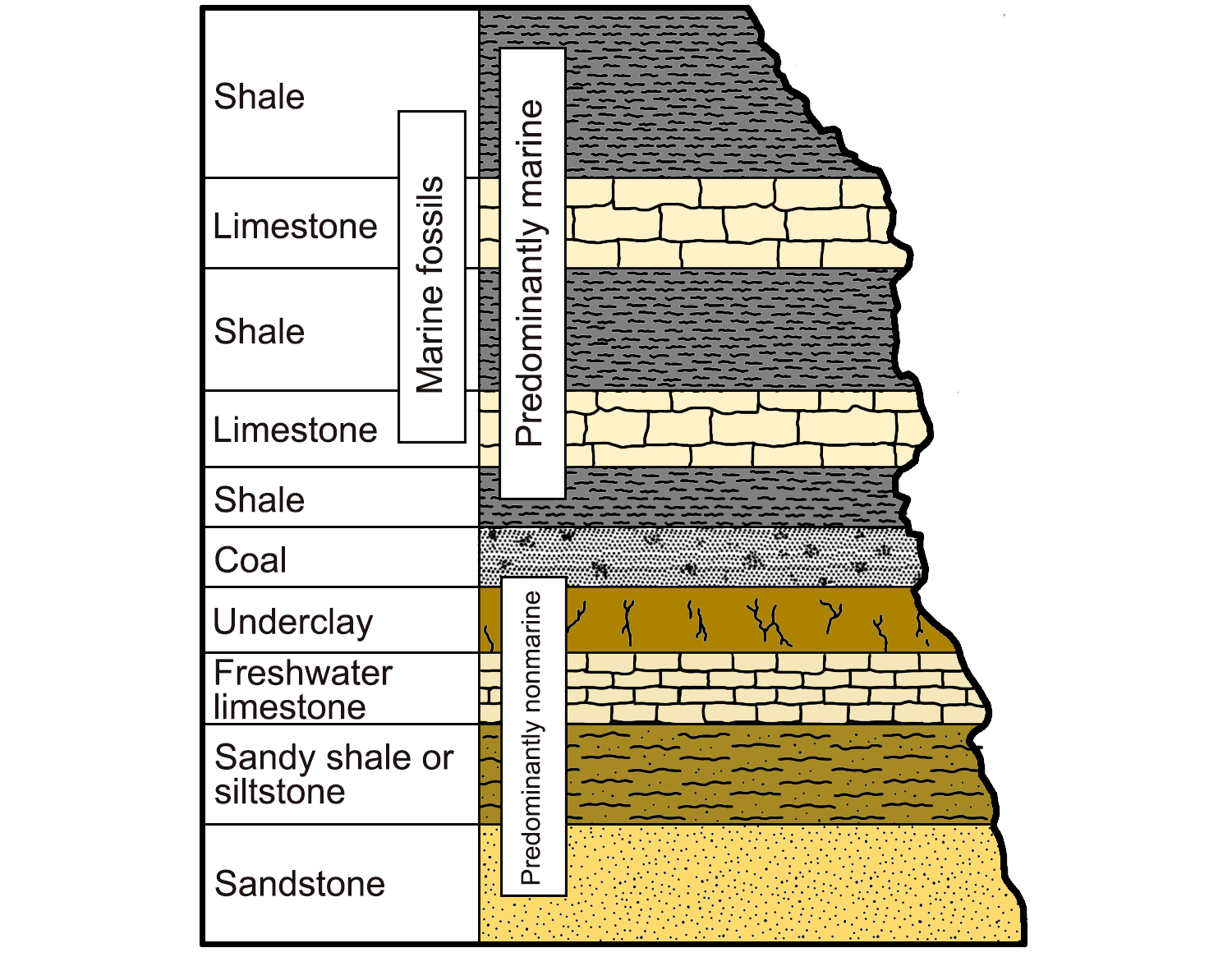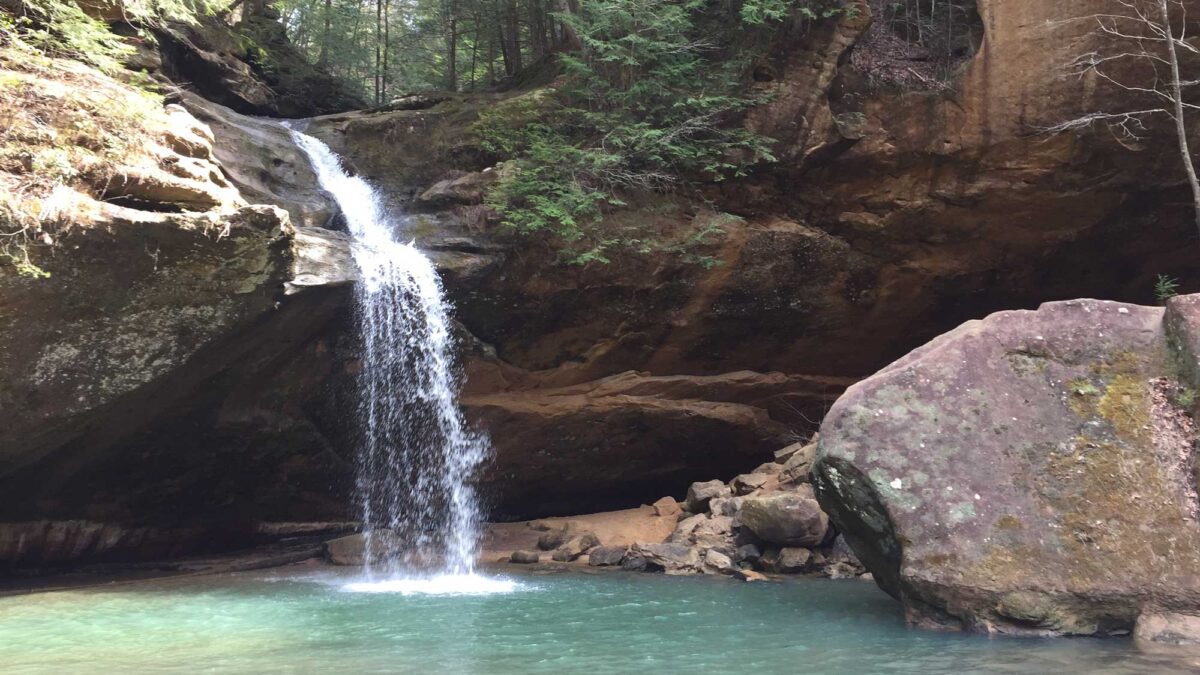Spotlight: Overview of the rocks of the Inland Basin region of the midwestern United States, including Illinois, Indiana, and Ohio.
Topics covered on this page: Overview; Resources.
Credits: Most of the text of this page is derived from "Rocks of the Midwestern US" by Richard A. Kissel and Alex F. Wall, chapter 2 in The Teacher-Friendly Guide to the Earth Science of the Midwestern US (published in 2014 by The Paleontological Research Institution and edited by Mark D. Lucas, Robert M. Ross, and Andrielle N. Swaby). The book was adapted for Earth@Home web by Elizabeth J. Hermsen and Jonathan R. Hendricks in 2022. Changes include formatting and revisions to the text and images. Credits for individual images are given in figure captions.
Updates: Page last updated January 3, 2023.
Image above: Waterfall over Carboniferous-aged rocks in the Hocking Hills of southeastern Ohio. Photograph by Jonathan R. Hendricks.

Geologic map of the Inland Basin region of the midwestern United States showing maximum ages of mappable units. Image by Jonathan R. Hendricks for the Earth@Home project developed using QGIS and USGS data (public domain) from Fenneman and Johnson (1946)and Horton et al. (2017).
Overview
The Inland Basin is a large geophysical province, and only a small portion of it exists in the Midwest in eastern Ohio, southern Indiana, and Illinois. Most of the Inland Basin rocks in the Midwest are from the Mississippian and Pennsylvanian subperiods of the Carboniferous Period.
Much of the carboniferous rock in this region is derived from sediment shed into the basin from the Acadian highlands to the east.

Much of the Midwest region was covered by an inland sea during the Mississippian and Pennsylvanian subperiods, with sediment being brought in from the erosion of the Acadian highlands to the east. Adapted from figure by Illinois State Geological Survey.
Gradually, the amount of sediment settling into the basin declined, as the mountains were weathered down. The shoreline of the inland sea moved back and forth across the basin as the sea level rose and fell during this period. The fluctuating water levels created alternating sequences of marine and non-marine sedimentary rocks, known as cyclothems, that are characterized by their light and dark colors.

An example of a cyclothem, alternating sequences of marine and nonmarine sedimentary rocks characterized by their light and dark colors. Image modified from original by Wade Greenberg-Brand (after image from Levin, 2006, The Earth Through Time, 8th ed.), published in The Teacher-Friendly Guide to the Geology of the Southeastern U.S., 2nd ed., edited by Andrielle N. Swaby, Mark D. Lucas, and Robert M. Ross (published by the Paleontological Research Institution) (CC BY-NC-SA 4.0 license).
Limestones were also forming in the inland sea in areas receiving very little sediment. The Midwest was still located near the equator at this time, and the warm climate created lush vegetation. Large swamp forests covered the shorelines, and plant remains accumulated as thick piles of peat. Buried by sediment and more vegetation, the peat was compressed. Over time and through continued burial, the peat was transformed into layers of coal. The Pennsylvanian and Mississippian rocks of the Inland Basin region are the result of shorelines advancing and retreating, creating alternating bands of marine sandstone or mudstone and terrestrial coal deposits, respectively.
Resources
Resources from the Paleontological Research Institution
Digital Encyclopedia of Earth Science: Minerals.
Earth@Home: Introduction to Rocks.
Earth@Home: Geologic time scale.
Earth@Home: Geologic maps.
Earth@Home Virtual Collection: Rocks (Virtual rock collection featuring 3D models of rock specimens sorted by type.)



